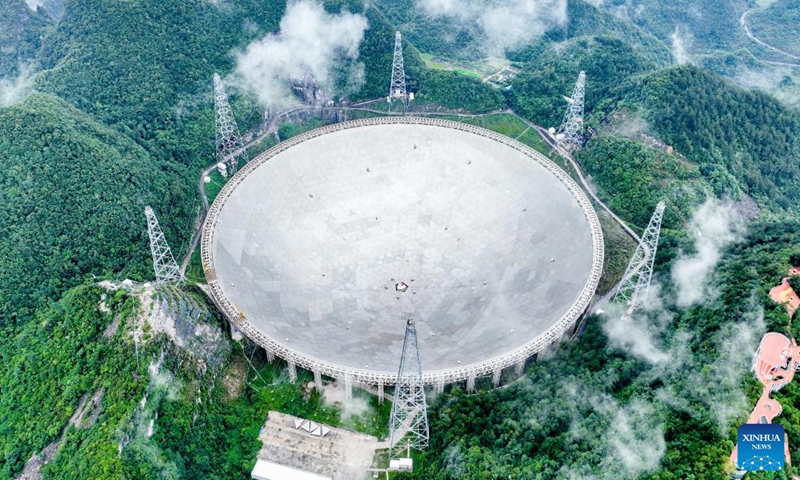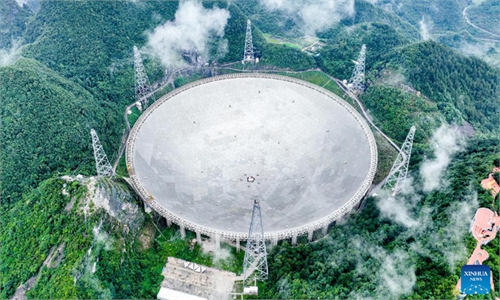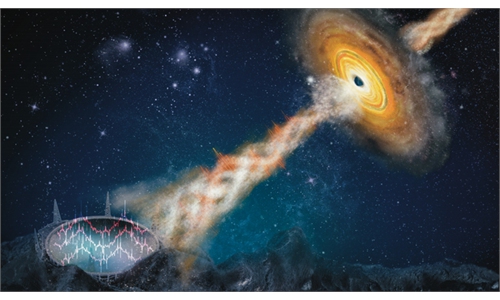
This aerial photo taken on June 22, 2023 shows China's Five-hundred-meter Aperture Spherical Radio Telescope (FAST) under maintenance in southwest China's Guizhou Province. China's FAST telescope identified a binary pulsar with an orbital period of 53.3 minutes, the shortest known period for a pulsar binary system.The research, mainly conducted by a team led by scientists from the National Astronomical Observatories of the Chinese Academy of Sciences (NAOC), was published in the journal Nature Wednesday. (Xinhua/Ou Dongqu)
Southwest China’s Guizhou Province scientists discovered for the first time a new fast radio burst (FRB) which possibly came from a cosmic explosion 6 billion years ago. The discovery was made with the help of China’s 500-meter Aperture Spherical Radio Telescope (FAST).
Fast radio bursts (FRBs) are super intense, millisecond-long bursts of radio waves produced by mysterious and unidentified sources in the distant cosmos. These extraordinary events generate as much energy in a thousandth of a second as the Sun does in a year. Since 1987, some radio telescopes on Earth have been detecting transient and intense radio wave pulses originating from distant cosmos.
The astronomical data processing team from the Key Laboratory of Information and Computing Science Guizhou Province at the Guizhou Normal University recently discovered the new FRB and named it FRB 20200317A.
It marked another significant time that a Guizhou local research institution has discovered the FRB with the help of FAST. The research achievement was released to their international peers through the Astronomer’s Telegram on September 23, 2023.
Astronomers estimated that this mysterious cosmic burst occurred about 6 billion years ago and was captured by China’s FAST on March 17, 2020.
The observation data comes from the FAST priority major project Commensal Radio Astronomy FAST Survey (CRAFTS) led by FAST’s chief scientist Li Di.
The project is the world’s first technology that can simultaneously observe atomic hydrogen gas and pulsars, as well as conduct a simultaneous search for extraterrestrial civilizations.
The astronomical data processing team conducted systematic processing of the data captured by CRAFTS and discovered the new FRB.
The Guizhou Normal University and the National Astronomical Observatories, Chinese Academy of Sciences, jointly established a research center in 2014, and the Key Laboratory of Information and Computing Science Guizhou Province at the Guizhou Normal University by April 2021, which focuses on astronomical big data calculation and processing, have achieved fruitful research results.
Global Times


